Mastering The Pickleball Backhand: A Comprehensive Guide
The pickleball backhand is not just a shot; it’s a vital weapon in the game of pickleball that players of all levels must learn to wield effectively. For many, it represents the most challenging aspect of the game, yet mastering it can translate to greater success on the court. The ability to return serves and volley with confidence can make the difference between a good player and a great one. In this article, we’ll explore techniques, common mistakes, and valuable tips that can elevate your backhand game, ensuring that it complements your overall strategy. Whether you’re a newcomer or a seasoned player looking to enhance your skills, we’ve got you covered.
Understanding The Pickleball Backhand: The Basics And Its Significance
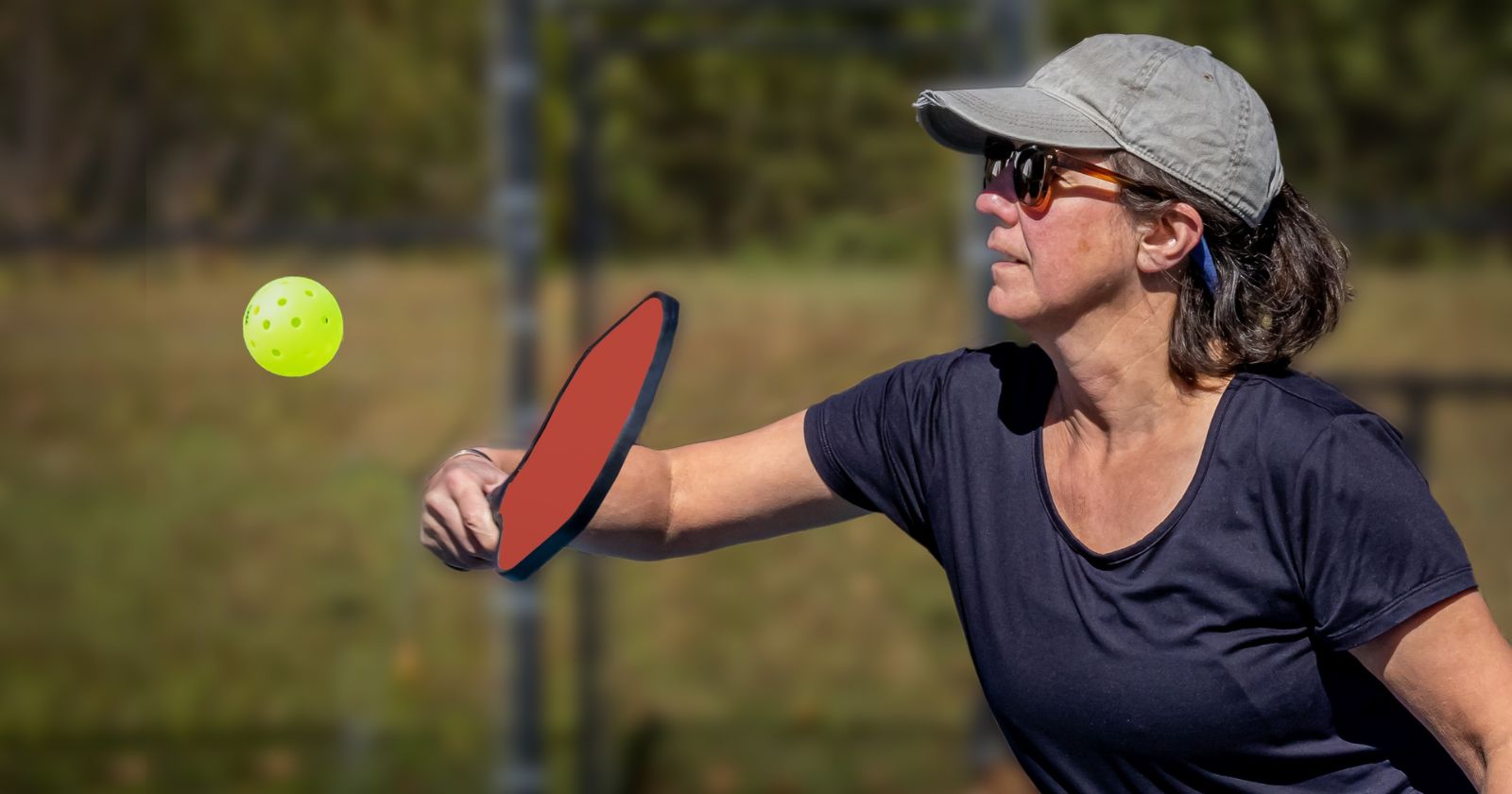
The Backhand Explained
The concept of the backhand in pickleball revolves around hitting the ball on the opposite side of your dominant hand. This shot is essential because it allows players to cover the court more effectively, especially when facing balls that come to their non-dominant side. This positional advantage can change the direction of play and keep opponents guessing.
Unlike the forehand, which many find more intuitive, the backhand requires a different mindset and touch. Think of it as the silent knight of your pickleball arsenal unassuming but potentially game-changing when executed correctly. Whether you’re exchanging deep rallies or attempting a quick volley, a strong backhand can help maintain control of the game.
Benefits Of A Strong Backhand
Having a solid backhand unlocks multiple strategic advantages. A strong backhand can expand your court coverage significantly, ensuring you can respond to more challenging shots effectively. It opens up shot options, enhances your consistency during rallies, and places the psychological pressure back on your opponent.
In competitive play, the ability to execute powerful backhand shots can force your opponent into defensive positions. You can manipulate the speed, pace, and placement of your shots, making it difficult for them to anticipate your next move. In essence, the backhand elevates your game strategy from mere survival to dominance on the court.
Mastering The Backhand Technique: A Step-By-Step Guide
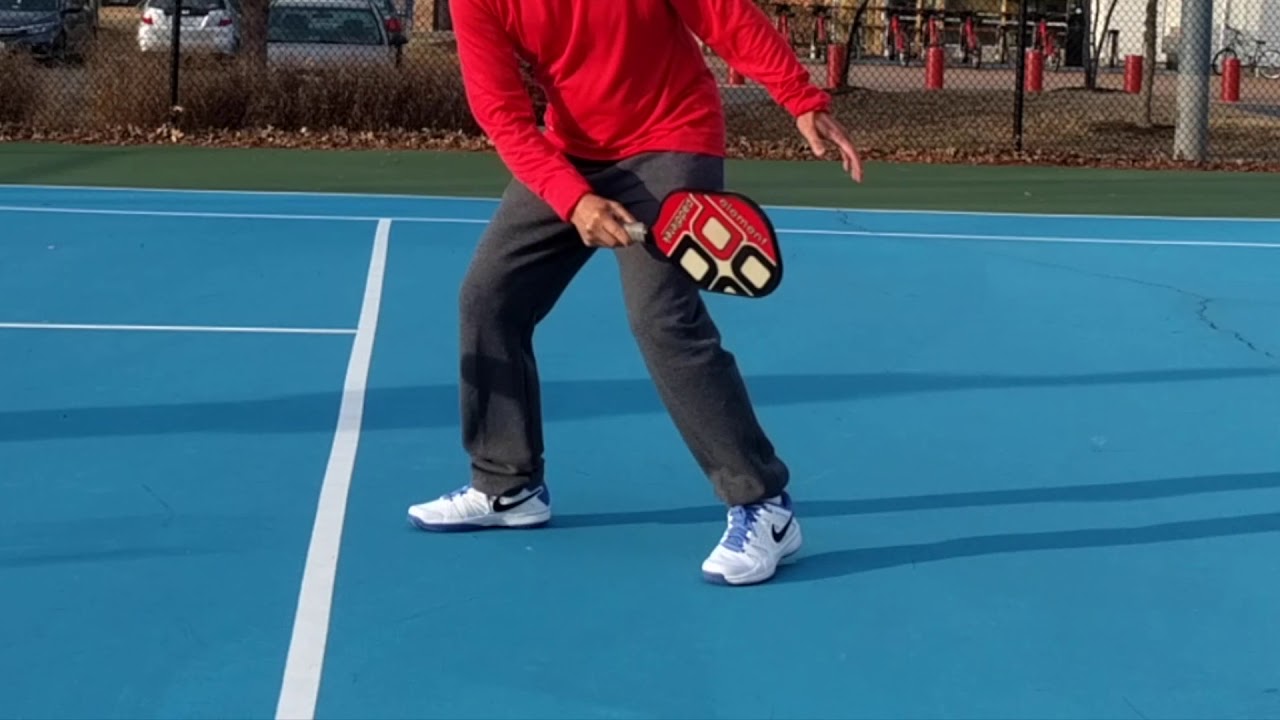
Grip And Stance: Setting Yourself Up For A Solid Backhand
A proper grip can be likened to the foundation of a building; it sets the stage for everything that follows. The eastern forehand grip is commonly suggested for backhands, allowing a firm hold while providing an appropriate angle for various shots. Your knuckles should face upwards, and the thumb should rest along the handle’s side. Experimentation is key here, so find what feels most comfortable for you.
Next, focus on your stance. Standing side-on to the net provides a stable base. Your non-dominant foot should slightly lead, offering better balance and leverage for your swing. Keep your knees slightly bent to ensure that you remain light on your feet, ready to react to your opponent’s movements.
Swing Path And Contact Point: Creating A Smooth And Powerful Backhand
Initiating your swing begins with a fluid motion. As the ball approaches, ensure your shoulders turn slightly towards the net. Shift your weight from your back foot to your front foot as you complete the swing. Your paddle should connect with the ball in what we call the “hitting zone,” with your elbow bent and wrist firm.
The contact point is crucial; ideally, it should be just in front of your body. This positioning allows for better control and power while minimizing errors. Following the contact, your paddle’s follow-through should resemble a smooth arc, ideally finishing pointed towards your target. When done correctly, this smooth transition can infuse your shot with the accuracy and velocity that break through defenses.
Common Issues With Pickleball Backhand
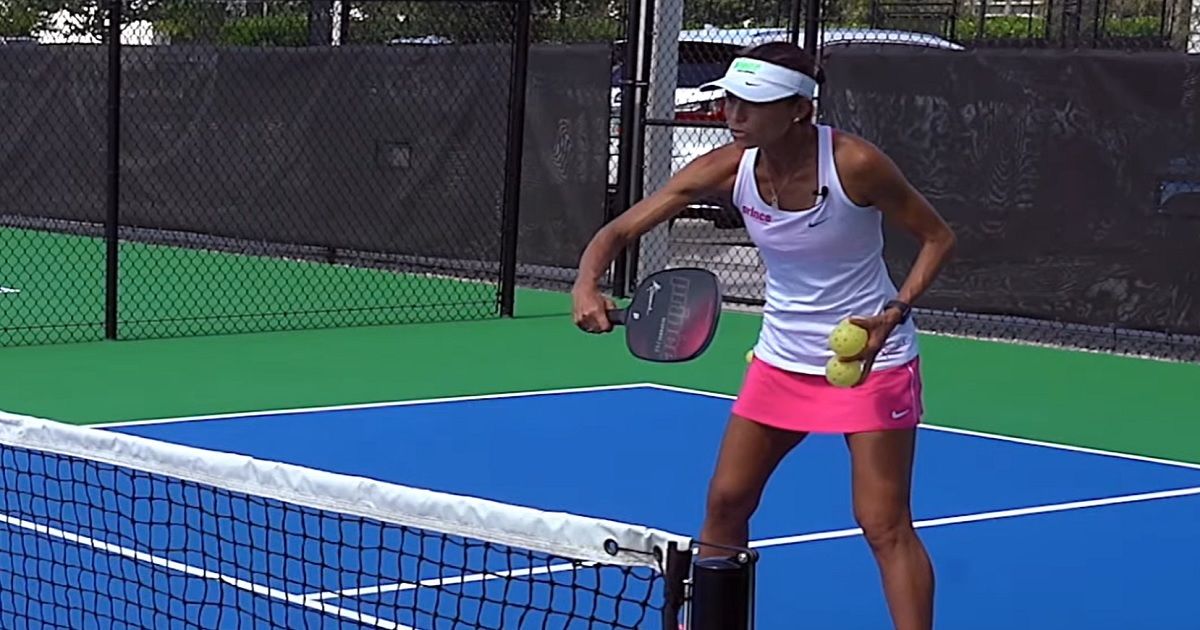
Lack Of Power
One of the prevailing issues players face with their backhand is the lack of power, primarily due to improper body positioning and footwork habits. A weak shot can leave you vulnerable to aggressive returns, leading to a loss of control in the match. Remember that generating power isn’t solely about arm strength core and leg engagement are equally essential.
If the shot feels weak, reassess your setup and practice engaging your entire body during practice. This engagement can sufficiently transform your shot from a mere push to a forceful return.
Inconsistent Shots
Inconsistency springs from a combination of common mistakes, such as overreaching or hitting with a flat paddle. When reaching too far for the ball, you may compromise your balance and stability. Instead, focus on maintaining a balanced stance while moving your feet into position, allowing you to hit more accurately from your preferred frame.
Keep your eyes on the ball throughout the shot to avoid unnecessary mistakes. This will enable you to confidently see the ball meet the paddle, ensuring a clean hit without disruption.
Avoidance
Perhaps one of the most significant challenges is the tendency to avoid hitting backhands altogether. Players may gravitate toward their forehands, believing it to be the safer choice. However, this avoidance can lead to predictability and ultimately hurt your overall game. Developing a solid backhand allows you to respond effectively to varying shots and keeps your opponents guessing.
Body Position And Footwork
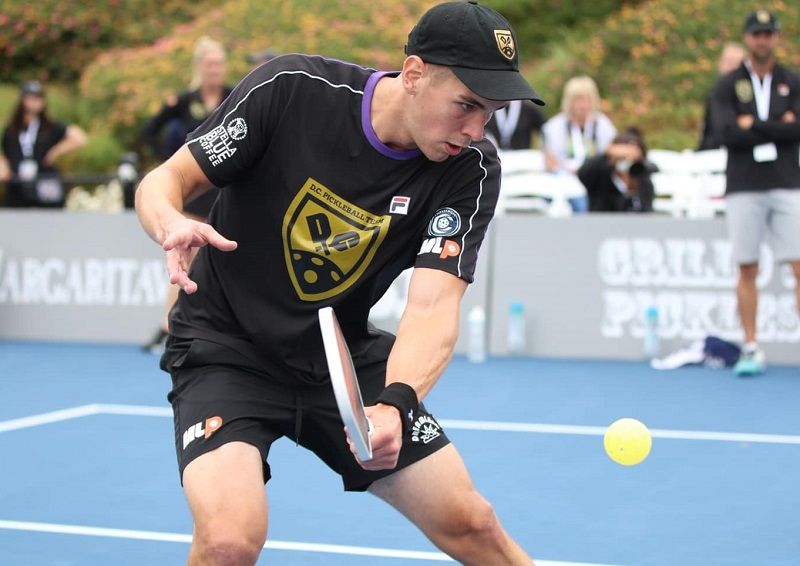
Footwork
Proper footwork is the bedrock of a strong backhand. Think of your footwork as the choreography of a dance, where every move counts. Start with ideal footwork, which includes turning sideways as the ball approaches. For right-handed players, stepping forward with the right foot is essential in generating momentum.
Imagine yourself like a coiled spring, compressed and ready to release energy at the right moment. This analogy highlights the importance of positioning prior to the shot, providing you with stability and readiness as you engage in the game.
Weight Transfer
Weight transfer is a critical aspect often overlooked. As you prepare for your backhand swing, weight should be shifted from your non-paddle side leg to your paddle side. This shift not only amplifies power but also enhances shot placement. Proper weight distribution ensures that your body is aligned and ready to generate the momentum required for a powerful stroke.
Practical Exercises
Footwork Drills
To improve your backhand performance, incorporate a set of footwork drills into your practice routine. Simple exercises such as shadow swings can enhance your balance and position while ensuring you are well-prepared for any shot. You can also collaborate with a partner to practice specific shots at alternating speeds to simulate game situations.
Adding The Paddle
Once comfortable with your footwork, begin integrating the paddle into your drills. Focus on executing your backhand while maintaining proper foot positioning. Such a progression ensures that your physical coordination complements learned techniques.
Ball Contact
Remember to emphasize contacting the ball in front of your body as you practice. This detail in execution can dramatically affect the accuracy and effectiveness of your shots, enabling you to control the game with more finesse.
Five-Step Process To Hit A Winning Backhand
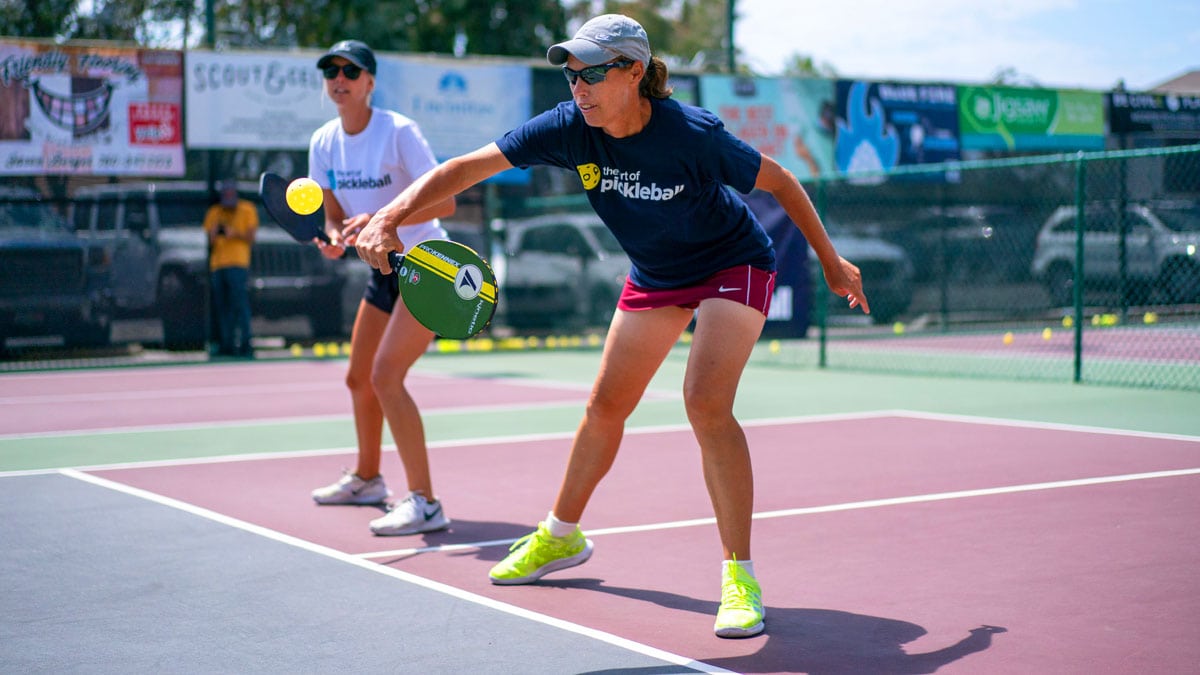
Step 1: Early Preparation
The importance of early preparation cannot be overstated. As the incoming ball approaches, rotate your body towards your non-paddle side, striking a ready posture that optimizes your reaction time. This anticipation ensures you can respond quickly, keeping your opponent on edge.
Step 2: Use Non-Dominant Hand For Support
Utilize your non-dominant hand for support when preparing your shot. This hand serves as a stabilizer, providing the paddle with more control during your swing. Ultimately, this creates a more cohesive and powerful backhand shot while enhancing your technique overall.
Step 3: Step With The Right Foot
Reinforce the importance of stepping forward with your right foot during the swing if you are right-handed. This maneuver solidifies your position, allowing your body to align more naturally during the shot, which amplifies both accuracy and strength.
Step 4: Make Contact Out In Front
Ensure that you make contact with the ball while it is in front of your body. This focus can increase both your shot precision and velocity. It provides a generating motion that is crucial for executing powerful backhand strokes consistently.
Step 5: Follow Through Properly
The follow-through is as essential as the wind-up. Visualize your paddle completing a Ferris wheel motion, returning smoothly to neutral position after the shot. A proper follow-through not only conveys authority but also contributes to the accuracy of your shot placement.
General Tips
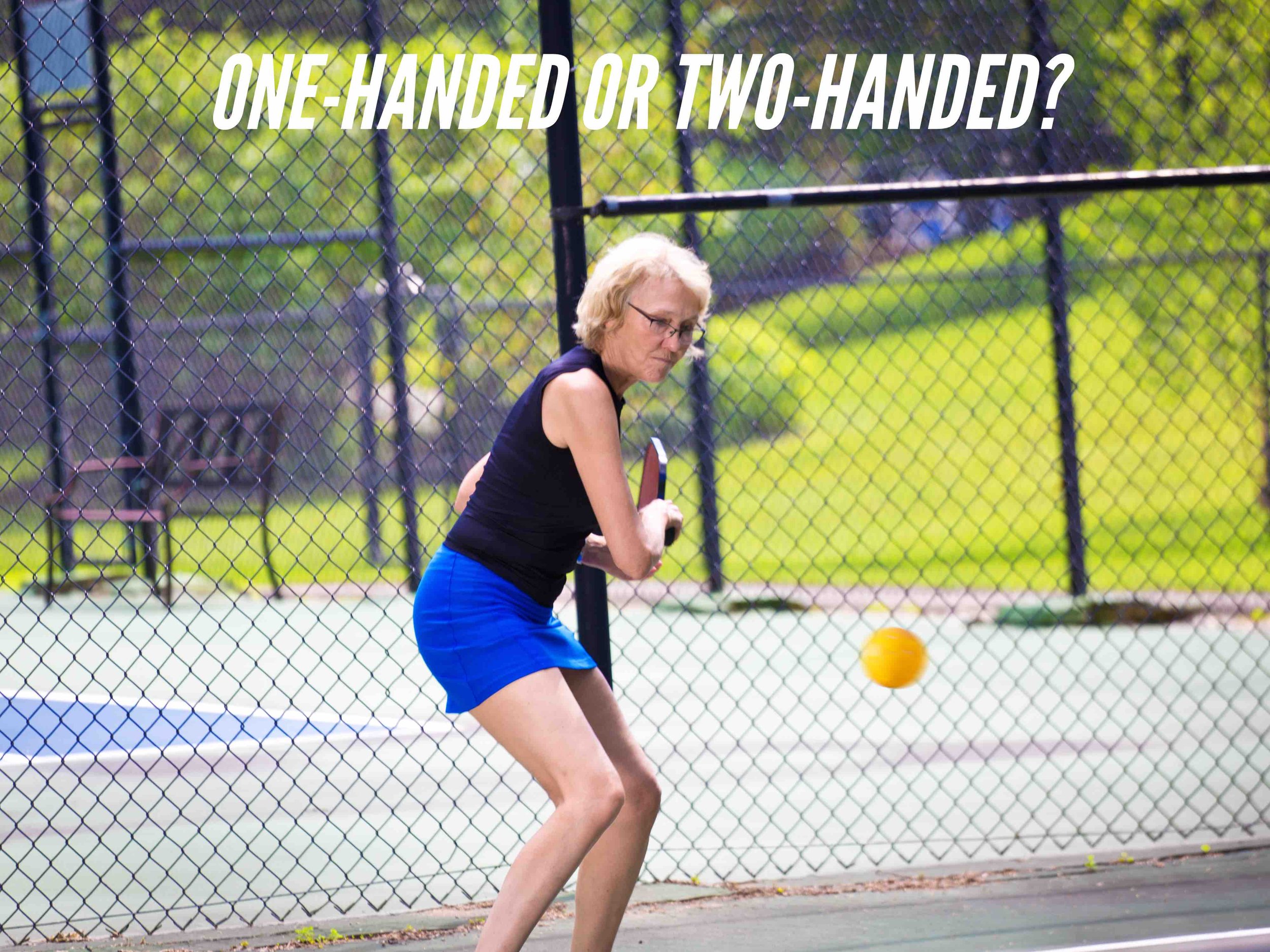
One-Handed Vs. Two-Handed
The age-old debate over one-handed versus two-handed backhands remains relevant in pickleball circles. Each approach has its unique advantages. One-handed shots typically allow for more reach and finesse, while two-handed strokes provide better stability and control. Discovering which method suits your style involves experimentation and adjustments.
Non-Dominant Hand Support
Reiterate the key role of the non-dominant hand in stabilizing your paddle throughout your swing. Using this hand effectively can lead to improved shot consistency, allowing for greater control and unpredictability, both fundamental elements for any competitive player.
How To Generate Power In A Backhand
Stance And Rotation
When focusing on generating power, a solid closed stance aligned with shoulder rotation plays a pivotal role. This foundation increases your ability to generate leverage and momentum in your shots while adding an additional powerful layer to your technique.
Arm Extension
Extending your arm fully rather than leaving it confined maximizes the potential power available on the shot. This full extension aids in delivering an explosive strike that can change momentum during a rally, often leading to an impactful shot.
Wrist Action
Incorporating proper wrist action is critical as you finish your swing. A quick flick or snap can add the necessary spin or pace to your backhand, enriching its efficacy and unpredictability.
How To Hit A Backhand Groundstroke
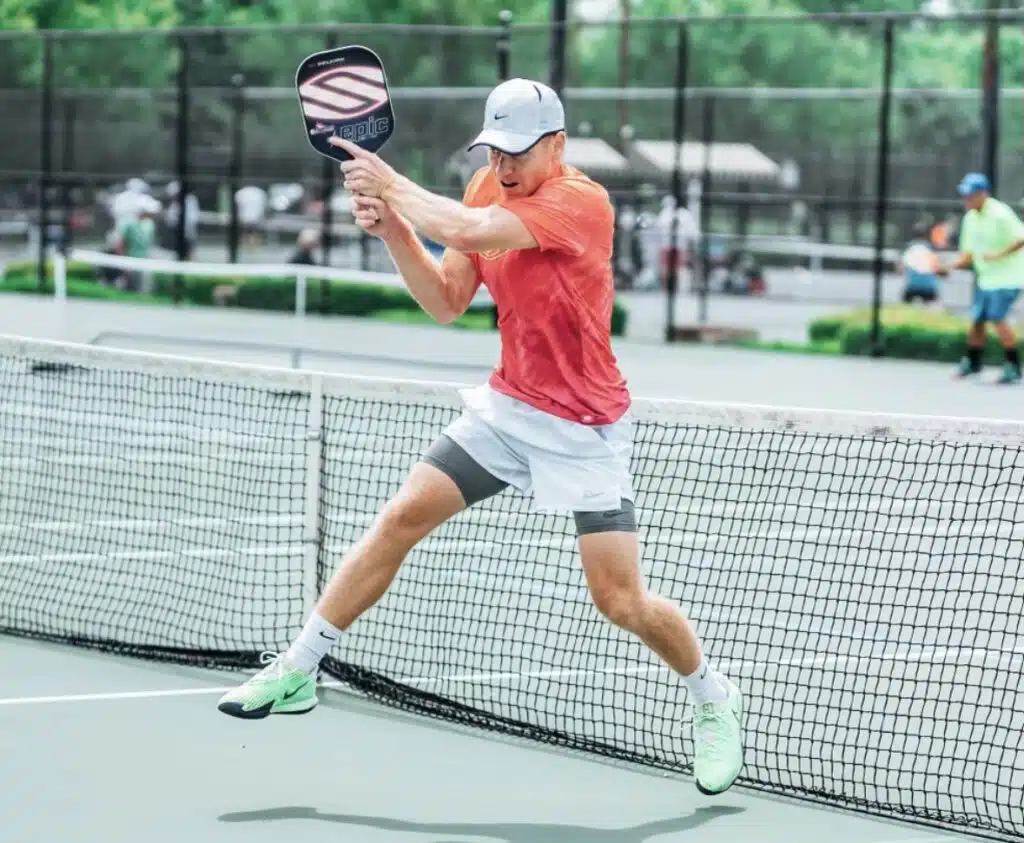
Paddle Path
The ideal paddle path for executing a backhand groundstroke should mimic a low-to-high arc. This motion not only helps with projection but also influences the trajectory of the ball, giving it the necessary lift to clear the net and dive down towards your opponent’s side.
Contact Point
Once again, make contact with the ball directly in front of your body. This contact point facilitates better control over placement and direction, allowing you to varying angles that keep your opponent guessing.
Wrist Action
Remember to engage your wrist properly to generate necessary spin, crucial in any competitive match. A subtle wrist flick can alter the ball’s behavior significantly, causing opponents to misjudge their return.
Conclusion
The pickleball backhand is a vital shot that can make or break your game. By mastering its techniques, understanding its strategic applications, and practicing consistently, you can transform your backhand into a powerful weapon that unlocks your full potential on the court. Practice your backhand today, and watch your pickleball game reach new heights. A solid backhand is the key to covering the court, controlling the pace of the rally, and dominating your opponents. Keep refining and experimenting, and that elusive shot will soon become an integral part of your gameplay!
